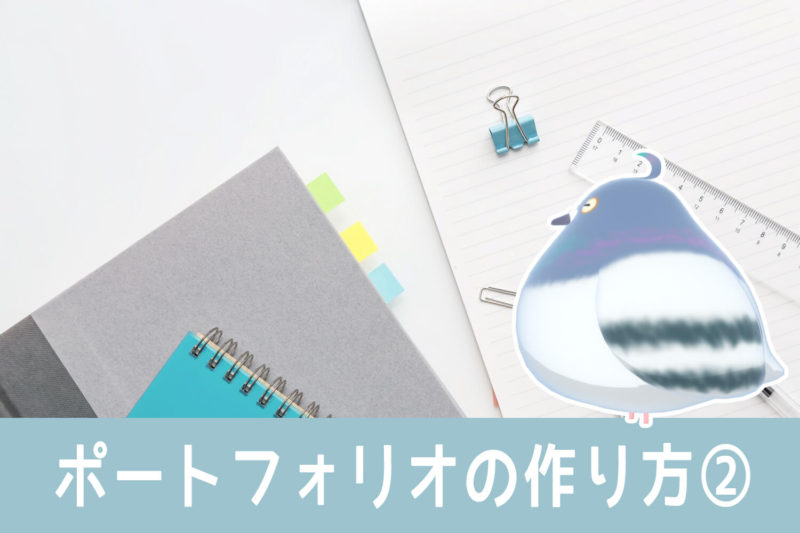
Previous article, How To Make CG Portfolio 1) - More Important Is How To Think,
I talked about the importance of properly considering both the audience and what you want to convey most in your portfolio.
This is why we believe that if you create with this approach, you will naturally create a nice portfolio.
Well, that said, it is still difficult to create a portfolio.
I want to make the difficult task of creating a portfolio as easy as possible.
In this article, titled How To Make CG Portfolio 2), we will write about "things you don't have to think about" and "things you do without thinking about" when creating a portfolio.
If you know what not to do and what to do anyway, doesn't it make portfolio creation a little easier?
2 things you don't have to think about when creating a portfolio
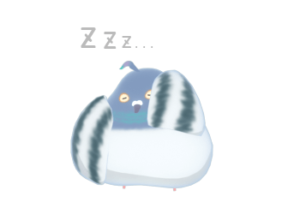
First, let's talk about what you don't have to think about when creating a portfolio.
- No need to show off your personality or individualis
Have you ever thought about it this way?
Since the company receives many portfolios from job applicants, it is natural to think, "Maybe I should make my portfolio unique and different from others?"
But you don't have to think about it.
This is because "individuality" and "personality" come out on their own.
Even if 100 people follow the same approach and create portfolios in the same way, no two portfolios will ever be the same.
Colors and layouts can be similar, but that is because the colors and layouts that are easy for people to see are usually determined by a few patterns.
Even if the colors and layout are "normal" and "similar" to others, each person who created the portfolio has his/her ideas about it.
The results of this thinking will appear in the contents of your portfolio as "your personality" or "individuality.
So you don't have to dare to think that you should be different from others.
Occasionally, people will put something unique on the first page of their portfolio that makes you say, "Why did you choose this one?"
It certainly stands out and makes an impact. In fact, you may be invited for an interview because of that impact.
There is nothing wrong if the impactful individuality is the person's own, and it has come out on its own.
But what if they are forcing themselves to do things they normally wouldn't do to stand out from others?
Even if you were invited for an interview, you would probably think, "This person is somehow different from what I expected from the impression of his/her portfolio.
Trying to appeal to people's "personality" and "individuality" by forcing them to do so will only be tiring.
You don't have to do that, it will come out naturally on its own as long as you do things as usual, so there's no need to think about it.
- No need to spend a lot of money on binding or elaborate designs
Some of you may have this problem.
It is your portfolio that may determine your future. It is only natural that you want your portfolio to be a work of art that you can confidently show to others.
However, it is the contents of the portfolio that the other party sees, never the outside.
Whether or not the book is professionally bound is not important. It is nice to focus on the design of the cover and binding, but that is not the essence of a portfolio. The role of the portfolio is to...
The goal is to convey to the viewer what you can do now and what you have done up to this point.
In short, any portfolio that properly conveys what you want to convey to others is acceptable.
I can't get my message across unless I have it professionally bound!
Only when I design the cover and the binding with the utmost care can I best convey what I want to say!
If that's the result of your thinking, I think you should do it - by all means!
But if not, then if that's not what you want to convey, you don't have to do it.
A clear file was bought at a stationery store and a piece of work was printed on a home printer. Even if you create a portfolio with these materials, you will still be able to convey what you want to say.
You don't have to think about making your portfolio outside look better.
Outside
That which surrounds. In turn, the framework of things. Appearance.
3 things to do without thinking when creating a portfolio
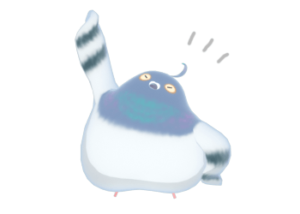
The next thing you don't have to think about when creating a portfolio is about doing it without thinking about it.
- Unify formatting throughout
The format here means the following
Format
Type, font
Style, paper, photo size, etc.
Specifically, is this the case?
- Align font size and color for each title and description of each work.
- Unify Japanese and alphanumeric font types.
- Alphanumeric characters can be either full-width or half-width.
- Match background color, line, and border thickness at each location
I'm sure there are others, but in other words, it's something that seems to be generally standardized in the reading material.
If you have a book that you own that is technical or instructional, pick it up and look inside.
Maybe chapters are divided into chapters like 1 - 2 - and each chapter has a page that serves as a heading, and then all chapters have a uniform heading page style.
If you look within this blog, you will see a uniform heading style and font size.
This is usually standardized in most reading materials as a result of efforts to make it easy for readers to read and understand the content.
A portfolio is also like a book.
Uniform formatting of the entire portfolio will lead to ease of viewing and understanding.
Matching font size and color, and unifying font types are things that can be done regardless of whether one has knowledge or sense.
Try to get it all together first without thinking too much. This alone will make your entire portfolio look much more cohesive.
- The work should be accompanied by a explanation in writing
Each work to be included in the portfolio should be accompanied by a description.
Let's just assume that's the way it is.
If you want to use the entire space of a two-page spread or a full page to introduce your work, you do not have to put the title and description on that page, but can put them on the next page.
The reason why we include an explanation is that there are always things that the person who sees your portfolio work will want to know. For example, they will be interested in things like this.
- What tool did you use to create it?
- How long did it take you to make it?
- How many polygons and what texture size?
- Did you make it all by yourself? If it was a joint production, where were you in charge?
- What were your intentions? A job? An assignment? A hobby? For a portfolio?
- Do you have any particular points of interest?
If you know what they want to know, it's kind and quick to tell them from the start.
However, these explanations are only intended to supplement the work.
Since the start of the show is the work itself, please keep your written description brief and to the necessary and sufficient amount. If it is work that you have worked hard on and put a lot of thought into, there are many things you will want to explain.
But let's hold back here and keep the explanation as brief as possible.
If they are interested in learning more about the work and the person who created it, they will be allowed to do so in the form of an interview.
And then...
It is recommended that the portfolio include the date of creation, the name of the creator, and a table of contents.
It would be helpful to know whose portfolio it is and approximately how much content is in it so that it can be easily seen. We think that names are especially essential to prevent the loss of portfolios.
- Check for misspellings and spelling errors
The portfolio is mainly works of art, but there is also quite a bit of textual information such as titles and descriptions.
Finally, be sure to check carefully for typographical and spelling errors.
Mistakes in Kanji characters and misspellings in English have nothing to do with a designer's ability as an artist.
But what about as a "working member of society who does work"?
Is he someone who neglects to check at the last minute? Is he clumsy? You may be thought of as such, just a little bit.
If you had thought that way in a way that had nothing to do with the content of the work...
It's a huge waste!
Therefore, please be careful to check for typographical errors.
I don't think you will fail in the application screening because of a typo, as we all make mistakes. If a company would drop you just because of that, it seems a bit narrow-minded.
(*In "The Chaser Game", a work manga set in a game company, it is depicted that "people appear in the documents" and that documents with many typos and omissions are the first to be rejected - it is hard to see if there are too many applications.)
Well, wrong characters can be identified and fixed by checking, so there is no harm in doing so after all.
*Checking yourself to reduce simple mistakes is sometimes very important in 3DCG work. I wrote about this in the article Clean 3DCG Data.
Summary: What doesn't have to think & what do without thinking when creating a portfolio
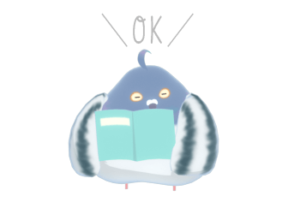
In this article, I wrote about what to "not think about" and what to do without thinking when creating a portfolio. Here is a quick summary.
- Don't think about forcing your portfolio to showcase your personality.
- Don't think about making portfolio's outside better than it needs to be.
- Consistent formatting throughout the portfolio
- Each piece of work in the portfolio should be accompanied by a sufficient description of the work.
- Finally, check for typos and spelling errors.
The "things you don't have to think about" and "things you do without thinking about" described in this article are like tips that make the difficult task of portfolio creation a little easier.
This is not a trick to create a portfolio that will always pass the screening process, or a portfolio that will always get you a job offer.
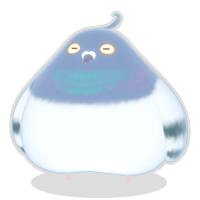
I don't know such a trick - or maybe it's not supposed to be there.
I hope this article will ease some of the worries of those who are struggling with portfolio creation.
How To Make CG Portfolio 1) - More Important Is How To Think In this section, we write about the "way of thinking" that Toha thinks is the most important in creating a portfolio. If you have not seen it yet, please do so.
In one of the articles introducing the comments we receive on our blog, Portfolio questions were answered.
If you are interested, please read this page for a little bit about drawings to include in your portfolio.

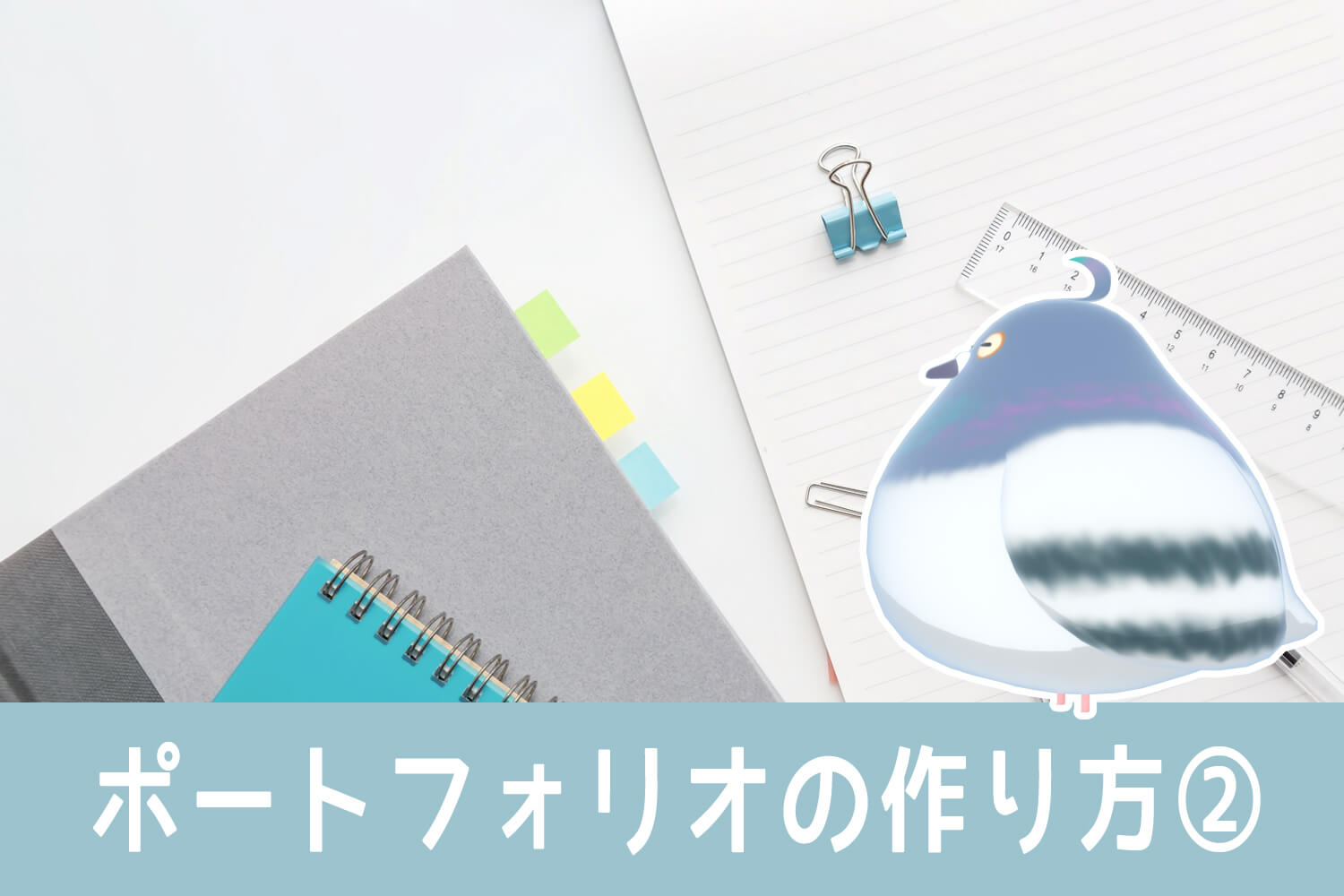

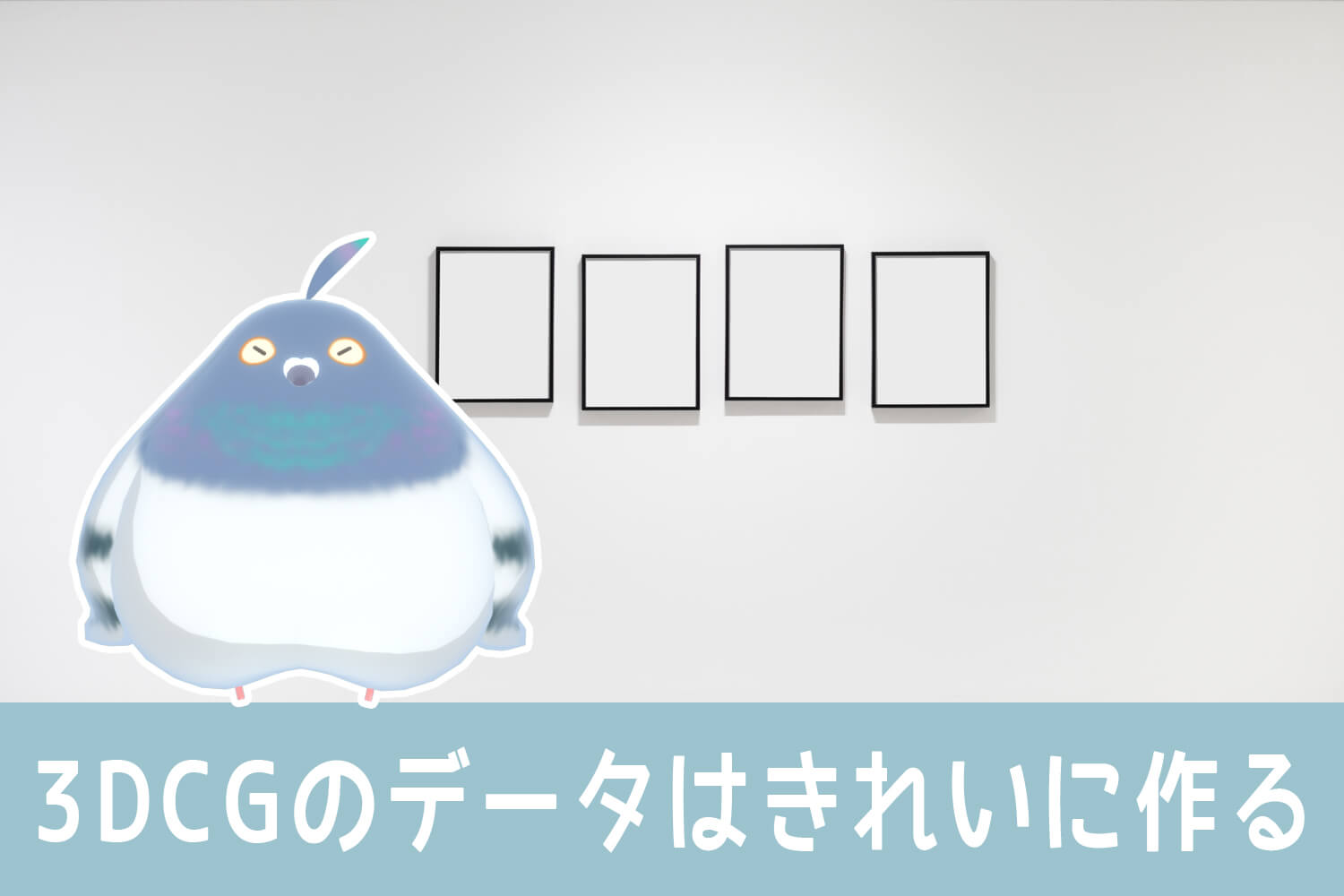
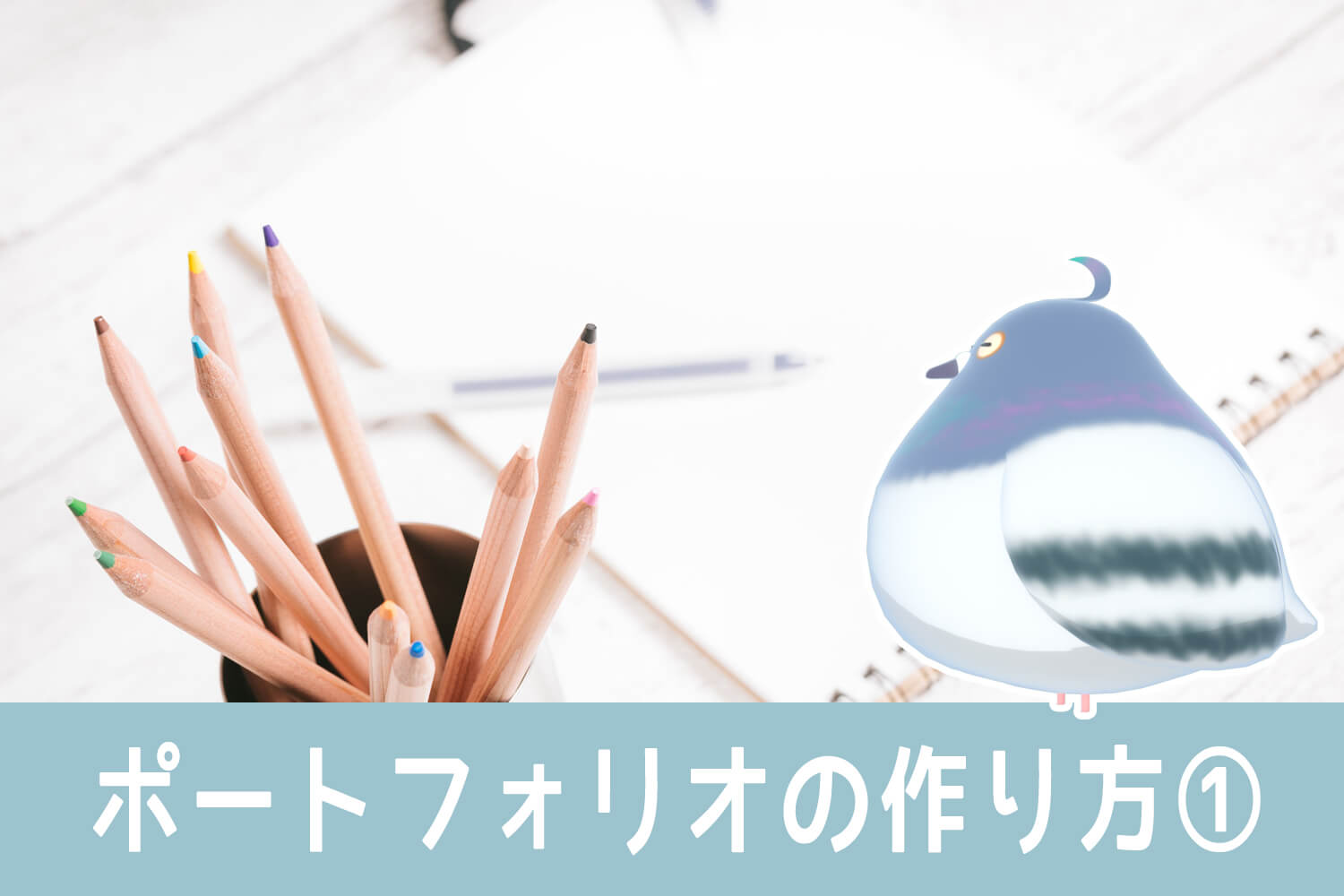
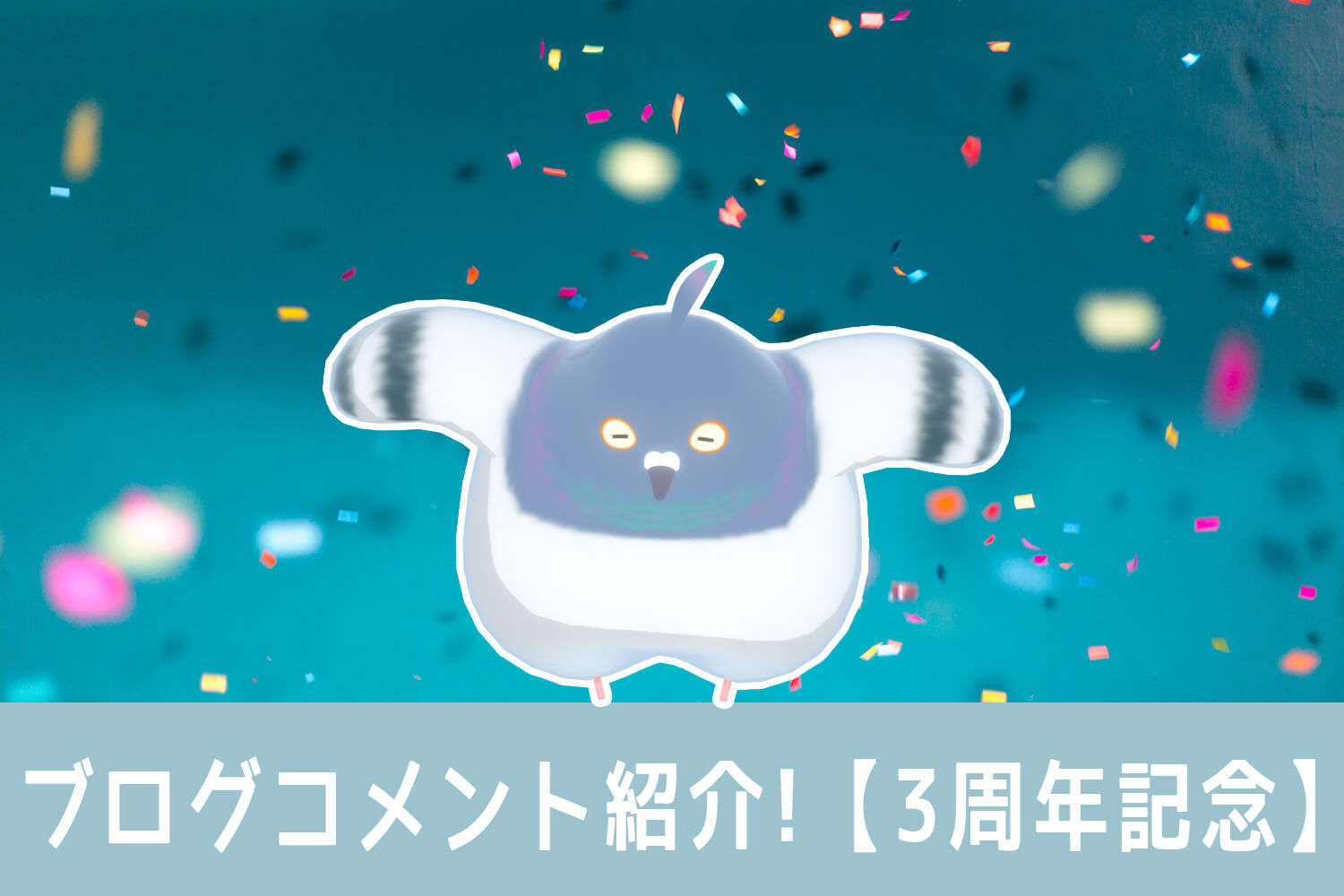

List of comments
Hello. I am always looking for information on your blog. It helps me a lot!
I have a few questions.
Is it OK to incorporate such materials into my work and include them in my portfolio?
I created the main characters and buildings myself, but because I did not have time, I purchased the grass and tree models from the asset store and placed them.
I would like to know if the company is looking for a picture that is not 100% made by your own hands, or if they are looking for someone with compositional and comprehensive skills who can create a good picture even using existing materials.
Supplemental:.
I don't think we should fraudulently claim the stone, so if it is the former, I will make a new one myself and replace it, and if it is the latter, I will honestly note the assets I used.
Thank you for your comment, Poppo-san!
Now, your question is, "Is it OK or not OK to use externally obtained assets in my portfolio?" Is it OK or not to use externally obtained assets in your portfolio?
Although TOHA is not a corporate recruiter and this is just my personal opinion, I would like to answer the following questions.
I think it is "OK to use assets" - I think is "OK to use assets".
However, as Mr. Poppo mentioned, it is necessary to state "the part I created/used assets" so that the other party can understand what part you actually created and from where.
Also, assets should only play a supporting role in the work, and not become the main part of the work...rather than the part that was created.
In Poppo's case, I don't think it is a problem for Toha, since he created the main characters and buildings himself, and used assets such as plants and trees.
For example, aspiring motion designers often use externally rigged models for characters and create only motion to create demo reels.
What we want to show is the motion production part, but it would be very difficult if we had to start from the character model before the motion...
There are examples of this, so I think it is not a bad idea to use assets for other parts of the design, as long as they are well designed and properly appealing to the audience.
If an interviewer asks you, "Why did you use assets for this part of the project?" Ideally, you should be able to answer why and for what purpose.
If the reason is because it was a hassle to make something, or because you wanted to make it easier, it is difficult to answer the question.
Whether or not companies are looking at picture-making composition skills, etc... I can't answer that part because I don't know a bit toha, but here's what I can answer. Thank you very much for your cooperation~.
Thanks for your response!
Certainly, it would be unreasonable to ask people who are not modelers to create their own models completely...
I will be conscious of communicating honestly without losing sight of the points that appeal to me.
And I forgot that I would be asked about that in the interview... Thanks for reminding me...
You should still prepare a reason that makes good sense and shows enthusiasm.
Thanks to you, I now have a clear guideline for future portfolio building, and I'm relieved! Thank you!
I'm glad that my answer was of some help to you.
I know it's a lot of work to make a portfolio, but keep up the good work!